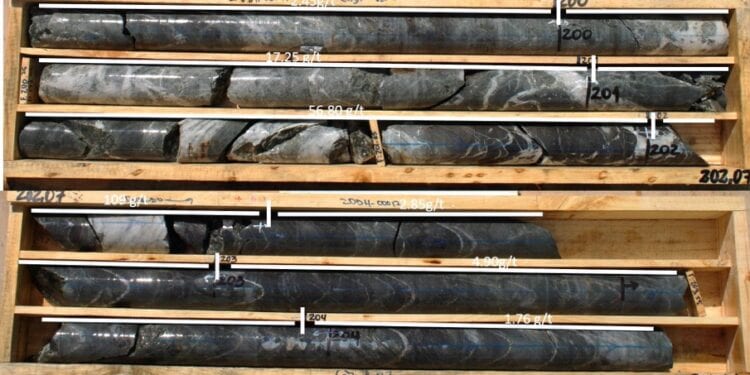Tesoro Resources Limited (ASX: TSO) has received exceptional wide high-grade assay results for part of the first drill hole in an initial 10 hole programme currently underway at the El Zorro Gold Project, Chile.
Managing Director, Zeff Reeves, said that in line with the company’s geological model, the hole encountered multiple wide zones of the El Zorro Tonalite (EZT), the main host lithology of gold mineralisation at El Zorro. From the partial assay results received to date, two zones of gold mineralisation have been encountered in the hole.
An upper zone from 44.00m to 74.00m and a lower zone from 183.22m to 206.22m, which remains open, awaiting assays from 206.22m to 287.65m (EOH).
“These assay results are exceptional and are to date the best gold results we have encountered in drilling at EL Zorro,” Mr Reeves said.
“The wide, high-grade nature of the results received so far demonstrate the huge potential El Zorro has to host a significant gold deposit and confirms our geological model of multiple stacked gold mineralised zones that are increasing in grade as they go deeper.
“We have now completed three holes of the current program and have stepped to the north in order to extend the current drilled mineralised zone by an additional 250m from where we are intersecting the host El Zorro Tonalite.”
Tesoro has previously drilled 16 diamond drill holes at El Zorro, delineating a large gold system with all holes intersecting gold mineralisation and multiple 100g/m intercepts reported from the Coquetas target at El Zorro.
The current drilling programme commenced in early February with an initial 10 diamond drill holes planned to extend the Coquetas drilled mineralised zone from 350m of strike to over 800m of strike and up to 300m depth.
Mr Reeves said mineralisation at Coquetas has been identified at surface and to date has been drilled to a depth of 300m. Gold mineralisation is controlled by north west striking fault systems which intersect the host rock (El Zorro Tonalite – EZT) which forms wide (identified to date up to 250m wide) sheeted vein complexes, that have been subsequently mineralised with gold bearing fluids.
A new, previously unknown, body of the EZT was encountered from 49.55m to 75.10m downhole with sheeted veining and trace visible gold at 57.70m.
This zone has returned positive assay results with a broad zone of 30.00m @ 0.94 g/t Au being returned from 44.00m. Within that zone two higher grade intervals were returned of 3.00m @ 4.27g/t Au from 44.00m and 4.00m @ 4.26g/t Au from 70.00m.
Visible gold has also been observed in strongly brecciated sediments and associated silica alteration at 202.30m down hole.
Strongly altered EZT and associated intense sheeted veining has been logged from 206.22m to 231.50m.












